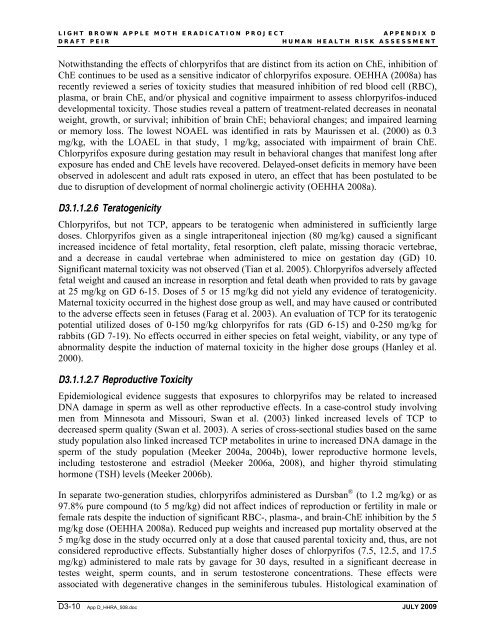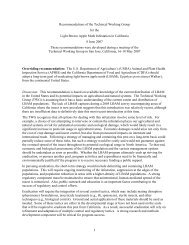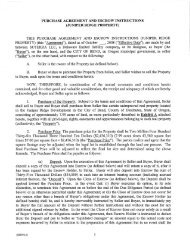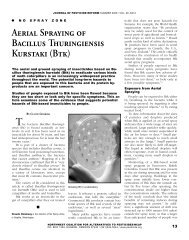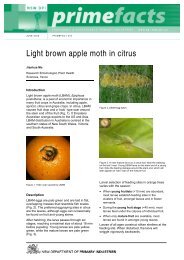Debunking Human Health Risk, APPENDIX D - LBAMspray.com
Debunking Human Health Risk, APPENDIX D - LBAMspray.com
Debunking Human Health Risk, APPENDIX D - LBAMspray.com
You also want an ePaper? Increase the reach of your titles
YUMPU automatically turns print PDFs into web optimized ePapers that Google loves.
LIGHT BROWN APPLE MOTH ERADICATION PROJECT<br />
<strong>APPENDIX</strong> D<br />
DRAFT PEIR<br />
HUMAN HEALTH RISK ASSESSMENT<br />
Notwithstanding the effects of chlorpyrifos that are distinct from its action on ChE, inhibition of<br />
ChE continues to be used as a sensitive indicator of chlorpyrifos exposure. OEHHA (2008a) has<br />
recently reviewed a series of toxicity studies that measured inhibition of red blood cell (RBC),<br />
plasma, or brain ChE, and/or physical and cognitive impairment to assess chlorpyrifos-induced<br />
developmental toxicity. Those studies reveal a pattern of treatment-related decreases in neonatal<br />
weight, growth, or survival; inhibition of brain ChE; behavioral changes; and impaired learning<br />
or memory loss. The lowest NOAEL was identified in rats by Maurissen et al. (2000) as 0.3<br />
mg/kg, with the LOAEL in that study, 1 mg/kg, associated with impairment of brain ChE.<br />
Chlorpyrifos exposure during gestation may result in behavioral changes that manifest long after<br />
exposure has ended and ChE levels have recovered. Delayed-onset deficits in memory have been<br />
observed in adolescent and adult rats exposed in utero, an effect that has been postulated to be<br />
due to disruption of development of normal cholinergic activity (OEHHA 2008a).<br />
D3.1.1.2.6 Teratogenicity<br />
Chlorpyrifos, but not TCP, appears to be teratogenic when administered in sufficiently large<br />
doses. Chlorpyrifos given as a single intraperitoneal injection (80 mg/kg) caused a significant<br />
increased incidence of fetal mortality, fetal resorption, cleft palate, missing thoracic vertebrae,<br />
and a decrease in caudal vertebrae when administered to mice on gestation day (GD) 10.<br />
Significant maternal toxicity was not observed (Tian et al. 2005). Chlorpyrifos adversely affected<br />
fetal weight and caused an increase in resorption and fetal death when provided to rats by gavage<br />
at 25 mg/kg on GD 6-15. Doses of 5 or 15 mg/kg did not yield any evidence of teratogenicity.<br />
Maternal toxicity occurred in the highest dose group as well, and may have caused or contributed<br />
to the adverse effects seen in fetuses (Farag et al. 2003). An evaluation of TCP for its teratogenic<br />
potential utilized doses of 0-150 mg/kg chlorpyrifos for rats (GD 6-15) and 0-250 mg/kg for<br />
rabbits (GD 7-19). No effects occurred in either species on fetal weight, viability, or any type of<br />
abnormality despite the induction of maternal toxicity in the higher dose groups (Hanley et al.<br />
2000).<br />
D3.1.1.2.7 Reproductive Toxicity<br />
Epidemiological evidence suggests that exposures to chlorpyrifos may be related to increased<br />
DNA damage in sperm as well as other reproductive effects. In a case-control study involving<br />
men from Minnesota and Missouri, Swan et al. (2003) linked increased levels of TCP to<br />
decreased sperm quality (Swan et al. 2003). A series of cross-sectional studies based on the same<br />
study population also linked increased TCP metabolites in urine to increased DNA damage in the<br />
sperm of the study population (Meeker 2004a, 2004b), lower reproductive hormone levels,<br />
including testosterone and estradiol (Meeker 2006a, 2008), and higher thyroid stimulating<br />
hormone (TSH) levels (Meeker 2006b).<br />
In separate two-generation studies, chlorpyrifos administered as Dursban ® (to 1.2 mg/kg) or as<br />
97.8% pure <strong>com</strong>pound (to 5 mg/kg) did not affect indices of reproduction or fertility in male or<br />
female rats despite the induction of significant RBC-, plasma-, and brain-ChE inhibition by the 5<br />
mg/kg dose (OEHHA 2008a). Reduced pup weights and increased pup mortality observed at the<br />
5 mg/kg dose in the study occurred only at a dose that caused parental toxicity and, thus, are not<br />
considered reproductive effects. Substantially higher doses of chlorpyrifos (7.5, 12.5, and 17.5<br />
mg/kg) administered to male rats by gavage for 30 days, resulted in a significant decrease in<br />
testes weight, sperm counts, and in serum testosterone concentrations. These effects were<br />
associated with degenerative changes in the seminiferous tubules. Histological examination of<br />
D3-10 App D_HHRA_508.doc JULY 2009


